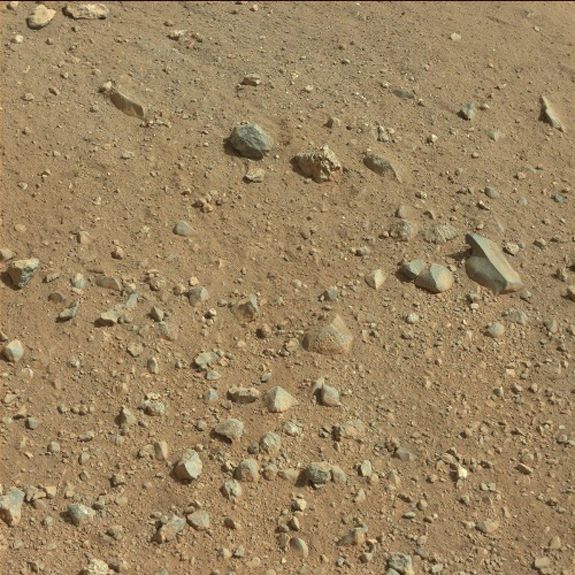Everything You Didn’t Know You Needed to Know About the Curiosity Rover
Just because the six-wheeled nuclear-powered behemoth has yet to begin cruising doesn’t mean there aren’t loads of interesting things to read and hear
/https://tf-cmsv2-smithsonianmag-media.s3.amazonaws.com/filer/2012081710401708_17_2012_curiosity-linkfest.jpg)
So marks nearly two weeks of NASA’s Curiosity rover sitting on the surface of Mars after its harrowing landing at 10:31 PDT on August 5th. The rover has yet to rove, but CNN reports that it could start roving soon.
But just because the six-wheeled nuclear-powered behemoth has yet to begin cruising doesn’t mean there aren’t loads of interesting things to read, see, and hear about it:
Relive the Landing
On the Planetary Society blog, Emily Lakdawalla introduces this wonderful video which mixes together the video capture by the Curiosity lander as it raced through the thin Martian atmosphere, the sounds of the mission control room, and a detailed timeline of the technical stages of the descent.
Photos, Photos, Photos

EarthSky complies what they consider the best photographs taken so far. On the flip side, Boring Pictures of Mars provides an surprisingly-still-inspiring antidote to all the enthusiasm. And, of course, this not-to-be-overlooked high definition 360° panorama of the surface.
In the Atlantic, Alexis Madrigal explains why some photos of the Martian surface may not look how you’d expect them to look.
“Even the most casual fan of space travel would notice something funny about the latest image from the Mars Curiosity rover, as seen below” says Madrigal. “I mean, they call Mars the “Red Planet” for a reason, and here we are looking at blue rocks.”
Get Inside the Minds of Curiosity’s Human Teammates

Some of the program’s scientists and engineers participated in an “Ask Me Anything” on Reddit, where users could… ask them anything. In the Atlantic Wire, Serena Dai sums up Five Things We Learned From the Curiosity Rover Team’s Reddit AMA. The NASA crew say the event was so successful that they intend to do another.
Dig Into Curiosity’s Technical Guts
Wired explains why Curiosity’s computers aren’t as powerful as they could be, and why that’s probably a good thing.
The RAD750 isn’t much when measured by terrestrial PC metrics. It’s a customized take on a 10-year-old IBM PowerPC chip design, and its 132 MHz clock speed would have been impressive around the time of the Windows 95 launch. It comes with just 120 megabytes of RAM. But like the other electronics components on Curiosity Rover the RAD750 has one thing going for it: It’s tough enough to withstand launch-time shaking, wild temperature fluctuations and levels of ionizing radiation that would fry the machine that you’re using to read this story.
Meanwhile, The Planetary Society delves into a multipart series on the rover’s systems and scientific instrumentation.
NASA’s Long-lasting Superstitions
Stress eating is a common habit for people the world over, and during the rover’s landing NASA’s snack of choice was peanuts. On Discovery News, Amy Shira Teitel explains the surprisingly long tradition of peanuts in the control room, a tradition that has its roots in 1964.
Just before Ranger 7 launched to the moon on July 28, mission manager Harris Schurmeier handed out peanuts to ease tensions. He figured chewing or playing with them on the table would give his team something else to focus on.
After a slew of failures for the prior Ranger missions, Ranger 7 finally made it. “hether or not peanuts had anything to do with it,” says Teitel, “the tradition has been in place ever since.”
And, Who Doesn’t Love a Good Parody?
More from Smithsonian.com:
Long Before Curiosity, Carl Sagan Had Something to Say to Kids About Mars
/https://tf-cmsv2-smithsonianmag-media.s3.amazonaws.com/accounts/headshot/smartnews-colin-schultz-240.jpg)


/https://tf-cmsv2-smithsonianmag-media.s3.amazonaws.com/accounts/headshot/smartnews-colin-schultz-240.jpg)